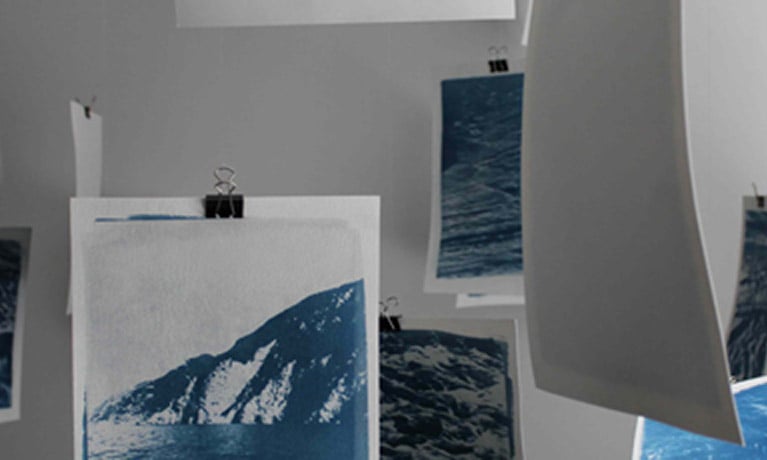Search
Call for Proposals; body ^ space ^ object ^ memory ^ identity Symposium

Wednesday 03 February 2016
Press contact
Image credit; See, Sea by Susan Sentler. Photo by Robert Meredith.
20th May 2016, Centre for Dance Research (C-DaRE) and researchers in the School of Art and Design
Following on from last year’s Memory ^ sentiment ^ body ^ space ^ object, this year’s event builds on the collaboration between the Centre for Dance Research (C-DaRE) and researchers in the School of Art and Design, and invites contributions from scholars and practitioners from across the arts and humanities. This one-day symposium will address how performers, artists and designers suggest the relationship of individuals to their surroundings.
Rituals of the everyday, of memory, of making things special, and of moving through space and leaving traces are all important factors in being human and developing a sense of self. Many artists, designers and performers have considered these aspects, and it is how these have been addressed that the symposium will explore.
CALL FOR PROPOSALS
There will be six strands, the parameters of which are suggested below, and it is proposed that a publication will follow. We invite contributions of papers and mixed-mode presentations Standard paper submissions should be no longer than 20 minutes. Panels that present up to three papers on a single theme are also welcomed. Mixed-mode or performative presentations will be considered but should be ‘self contained’ in terms of technical needs and be easy to set up and take down.
Format for Submissions
Please send a 300-word abstract in English, either as Word or PDF attachment, and include a short biographical note and institutional affiliation – if relevant - by Friday 26th February, to Lily Hayward-Smith – cdare.fah@coventry.ac.uk, making clear which strand is being addressed. Please ensure you also make clear what mode of presentation you are proposing and outline clearly any space or technical requirements. The Symposium will take place in a studio space and seminar rooms. We will notify you by mid March whether or not your proposal has been accepted.
- The (Moving) Body as Archive
Lead: Marie-Louise Crawley
C-DaRE
This strand will investigate definitions of the (moving) body as archival or exhibited object. In what ways might we consider the moving body as a 'non-material museum' (Lista 2014)? How might these considerations affect the relationship of the body to other material, archival objects?
- Objects of Mourning
Lead: Rob Tovey
School of Art and Design
This strand considers objects of mourning, engaging specifically with their materiality and aesthetic nuance, their historical context and their affect as memory catalyst, monument or emotional balm. These objects will be framed in spatial and somatic practices, with an emphasis on ritual, performance and the social gesture, highlighting ideas of loss, legacy, healing, guilt and status.
- Domestic Objects of Identity
Lead: Imogen Racz
School of Art and Design
This strand will consider post-war sculptural and object-based practices that are concerned with identity making within the home through suggesting interactions between a subject and their domestic spaces and objects. Papers might address, but are not limited to how artists have addressed ideas of collections, display, taste and/or memory.
- Absence and Presence
Lead: Graham Chorlton
School of Art and Design
This strand will consider work that deals with or invokes feelings of absence and/or presence, particularly within the realm of painting practice. How have/do artists achieve such work through use of image, abstraction, light, composition, the behaviour of paint.
- Objects of transformation
Lead: Sarah Whatley
C-DaRE
This strand will examine ‘transformation’ as a creative and aesthetic strategy: How do conventions of performance and arts practice participate in artistic alteration of objects? How does the artist transform the everyday/found object? How does live work transform through the digital? How does an art form transform when taken into a new context or environment?
- The production of the Social in Contemporary Choreographic and Performance Practices: The Materiality of the Immaterial
Lead: Katerina Paramana
C-DaRE
This strand will consider how contemporary performance works produce social relations, affecting in a material manner the way we live and act in the world, and how we relate to others. What kind of social relations do contemporary works of performance produce and how do these compare to the production of the social in neoliberal capitalism?




